Archives 75 – My Favourite Archive
- 18th May 2022
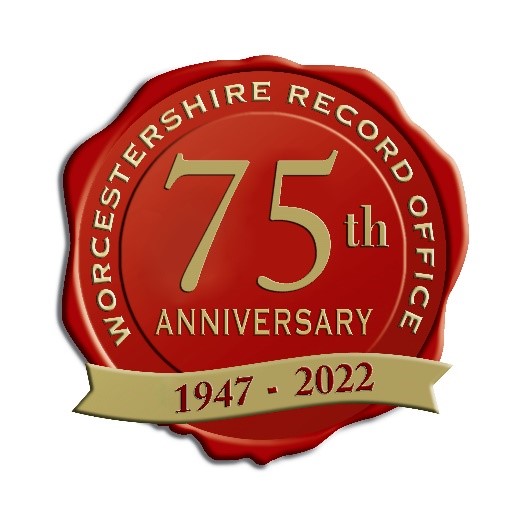 Here in the archives we have 12 miles of shelves of archives covering 900 years. When we opened in the Shire Hall in 1947 deposit number 1 was Worcestershire Quarter Sessions (a combination of a local court and forerunner to the County Council, having a role overseeing roads and bridges). We’ve recently received deposit number 16663!
Here in the archives we have 12 miles of shelves of archives covering 900 years. When we opened in the Shire Hall in 1947 deposit number 1 was Worcestershire Quarter Sessions (a combination of a local court and forerunner to the County Council, having a role overseeing roads and bridges). We’ve recently received deposit number 16663!
For our 60th anniversary we decided to have an exhibition called ‘My Favourite Archive’, asking colleagues and users for their favourite. Favourite is very subjective. Is it due to age, attractiveness, personal link, interesting content or some other reason? Is it for a specific document or a type? It was fascinating to see some of the different choices and interpretations.
We thought we’d share some of those chosen 15 years ago, and we’d love to hear any other suggestions too.
Quarter Session Records
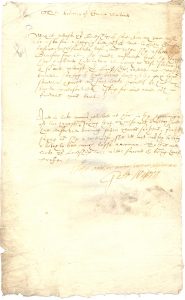
Extract from articles exhibited by Edward Buckland against John Genifer alleging that Genifer said of Mrs Buckland (being a mid-wife) that she was not fit to bring a dog to bed much less a women (1601)
“My favourite documents are the ones describing rowdy happenings…unruly behaviour and drunkenness…proving that night life was much the same in those days…as well as the persistence and success of a midwife in one parish when delivering illegitimate babies-she had a duty to obtain the name of a father so that a bastardy order could be issued…One wonders how many women gave the name of any man they could think of…rather than the son of the lord at the manor who was most likely to be the culprit” – Helen Curtis, former member of staff
The Court of the Quarter Sessions was held four times a year and presided over by a Justice of the Peace. Early Quarter Sessions dealt with the administrative tasks which were later carried out by local government as well as law and order. Proceedings were often recorded in detail and can tell us a lot about a person’s life, family, housing and occupation. This collection was the first one we catalogued (Archive ref: 110:16/49 xvi).
Photograph of a queue for ration books
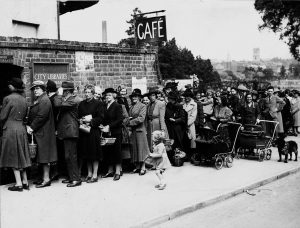
Photograph of a queue for ration books outside Cripplegate House, Worcester c1942. Chosen by Su Vale. Copyright Worcester News
‘For me this photo brings history to life, it was taken within living memory, but seems a world far removed from our own. When I see it I want to ask these women what their lives were like in 1942, were they working in the factories or the fields? How did they cope with rationing, bombing and the loss of loved ones? By using a combination of photos, oral testimony and diaries we can perhaps begin to build picture of what their lives might have been like’. – Su Vale, former member of staff
The Worcestershire Photographic Survey is an important collection of over 80,000 photographs and other pictorial material covering the parishes of old and new Worcestershire. (Archive ref 899:156 WPS Worcester 45886)
Extract from the will of Sibille Fyncher
‘We choose this particular document because it was written in the year 1546, on the cusp of Catholic to Protestant church of Himbleton. It mentions the Priest asked to ‘sing for her’ and her husband for 2 years after her burial in the Lady Chapel. It also mentions the animals on the farm such as oxen, a heifer, a ewe and lamb and items of her clothes – ‘a rownde violet gowne’, ‘best kertyll’ and ‘my best cap’. It also includes a bequest ‘to my gostly father iiijs iiijd’’. – Frank and Eileen Fincher, Record office visitors
This is an extract from the Will of Sibille Fyncher of Himbleton, 1546. The Archives hold thousands of Wills, this particular one was written at a time of great upheaval and reflects the social and religious turmoil at the time of the Reformation. (Archive ref 008.7 BA 3590/vol 5)
Register of Electors for East Worcestershire
‘When I was researching the history of Great Dodford Chartist settlement in 1849 I was able to prove that the Chartist settlers did get the vote, as was their aim. This was contrary to the experts’ opinions’. – Diana Poole, researcher
Archives can sometimes challenge long held beliefs. They provide an authentic record of events and leave the interpretation to you. Chartism emerged in 1836 with aim of gaining political rights and influence for the working classes. The Chartist settlement at Dodford was designed to provide working class people with smallholdings of four acres so that they could become self-sufficient and entitled to vote.
(Archive ref: b153 BA 1015 vol 18)
Diary of Victorine Janson
“This diary written by a young lady, records her busy and carefree social life…she was related to the Milwards, needle-makers of Redditch and refers to the Redditch area. A very poignant postscript written in 1872, contrasts how her life has changed in just ten years from being carefree to careworn. She feels this change was retribution for how she treated a fellow human being. Tantalisingly she breaks off before revealing exactly what she feels she has done. In researching her background…this Victorian lady & her diary will always be special to me.” – Fran Ricketts, former member of staff
Diaries can bring history to life. Victorine Janson was born on the 3rd July 1841, the daughter of Henri Etienne Janson, who was a master of languages and at one time French tutor to Queen Victoria. Her aunt was married to Henry Milward who owned the needle manufacturing business in Redditch. She died, unmarried, on 7th Oct. 1893. (Archive ref: 899:652 BA 11.401)
Letter from George London to Mrs Vernon
“An exciting find in the archives as it is a rare example of correspondence of George London, a partner in the Brompton Park Nursery, London and adds a considerable dimension to the history of the gardens at Hanbury Hall…because it shows the Vernons were in contact with a leading 18th Century nurseryman.” – Dr Murray Mylechreest. researcher
Archives can provide us with new evidence about the lives of people in the past. George London (1681-1714) was an English nurseryman and garden designer who worked on the gardens at Hampton Court, Melbourne Hall and Wimpole Hall, the Vernon family lived at Hanbury Hall, nr Droitwich. (Archive ref: 705:7 BA 10794/5/iii).
Register of Apprentice Weavers
“A fascinating document, not only listing apprentice weavers and masters in nearly 3000 entries, but also providing information about terms of apprenticeship monies and benefits received and the occasional idiosyncratic comment of the compiler. It also records the movement of apprentices between masters known as ‘returns’ sometimes because of death but more often I think because some apprentices were ‘problems’ An invaluable and I suspect, neglected source of information about one of the principle trades of Worcester at the time.” – Gaynor Hayes, member of the Friends of Worcestershire Archives
Apprenticeship dates back to the later Middle Ages (1300-1500). Master craftsmen, such as cobblers, blacksmiths, tailors and weavers, benefited from taking on an apprentice, usually a child in their early teens, offering board and lodging and training in return. (Archive ref: b705: 232 BA 5955/2).
The Household Records of Anne and Phoebe Porter
At first glance household accounts might not seem like the most exciting of archives, but they can tell us so much about the lives of the people in the past. The records of Anne Porter are particularly interesting as she began keeping accounts during childhood, listing her allowance and purchases such as ribbons and gloves and continued into adulthood where she details expenses relating to the running of the household. Within the deposit, there is also a list of jobs to be performed by each servant on specific days, scrapbooks and diaries. Viewed together they provide a fascinating insight into the running of a 19th Century household. – Chosen by Becky Jackson, former member of staff
Anne Porter was born in 1801. She lived at The Mansion, Birlingham with her sister Phoebe and, together, they managed the household and family estate. Anne was involved in a legal dispute when she broke off an engagement in 1840. She never married and died in 1877. Worcestershire Archives hold a wealth of family papers which often include such archives as accounts, diaries, letters, estate records, deeds and photographs. (Archive ref: 705:262 BA 3940/18 & 29).
The Disafforestation map of Malvern Chase c 1632
“It identifies all the parcels of land that Charles I received for relinquishing his forest rights in Malvern Chase. It shows the huge extent of land enclosed from the commoners. It explains why some land today has neither manorial or monastic origins. But best of all it shows 3 important healing springs – Moralls & St Thomas’s on the west and Holy Well on the east. It tells so many stories!” – Cora Weaver, researcher
“This is my favourite because it shows the area in which I live, as it was during the reign of Charles I. It confirms information given in written documents and adds to them. For example it shows that lime burning took place close to where the last lime kiln was erected c1907.” – Valerie Goodbury, former member of staff
The Malvern Chase was a Royal Forrest in the hands of a private individual until the 17th century. Change began when Charles I saw disafforestation as an easy way to raise some much needed money and a degree to that effect was made in 1631. One third of the wastes and commonable land (the King’s third) was to be enclosed the remaining two-thirds to be left free and unenclosed for the lords, freeholders and commoners. This confirmed by Act of Parliament until 1664. Prior to the Act a survey was carried out and this map was the result. (Archive ref: 705:24/366)
Pirton Estate map drawn by Pearce, 1623
“It is a beautiful map, full of colour and detail not normally seen in maps. It shows detail of rural life of a period nearly 400 years ago. Every time I see it, I see some new detail that gives me a buzz!” – Peter Walker, member of the Friends of Worcestershire Archives
The Pirton Estate map is part of the unique archive of the Earls of Coventry from Croome Court. This archive has been created over hundreds of years by the Coventry family and includes historical sources such the development of the parkland by ‘Capability’ Brown.
Worcester Glee Club
“This very saucy 28 page handwritten account of a journey along Worcestershire’s waterways by ten young rascals was written only two years after the first publication of Jerome K Jerome’s ‘Three Men in a Boat’. The Jolly crew, only identified by their nicknames, appear to have spent the journey, including an overnight stay at a local hostelry in an orgy of eating, drinking and chasing chambermaids. This wholly unexpected find affords a peep into aspects of Victorian life very far removed from Mrs Thatcher’s view of ‘Victorian values’” – David EverettLay Subsidy Roll
“Its format, an exchequer roll made up of parchment sheets sewn end to end, to a total length of 46 feet, is striking. It is unusual to find such a document in a local archive – they are usually in The National Archives. It records thousands of names of people living in 284 named places in Worcestershire, hundreds of years before any official census, with the amount of money they were to pay. It was also a time when surnames were beginning to be established but still show a variety of form, based on occupation, abode, lineage or a nickname.” – Robin Whittaker, former Archivist
It is fascinating to see a snapshot of the wealthier members of each community in the County from over 800 years ago.
Berrows Pictorial Supplement
“A wonderful insight into bygone life and times of Worcester and surrounding area. More importantly, photos of those who died in WW1 as there are very few people alive who remember them, without this archive they would be forgotten – very sad when you think of the sacrifice they made.” – Sandra Taylor, former member of staff
“They contain such a wealth of local and family history in a format which is easy and enjoyable to use.” – Hilary Myatt, former member of staff
Do you have a favourite? Has anything made a big difference to whatever you have been researching?There are many other potential Favourite Archives here. Our original archive area is open 5 days a week, and anyone can come to use us. You need an Archives Card, which you can apply for before coming. Check out the Using the Archives section on our website.
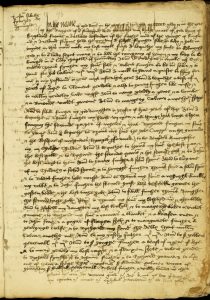
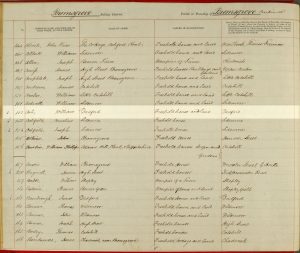
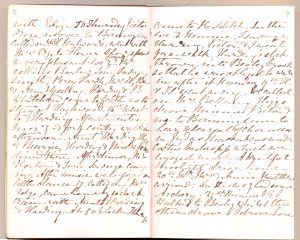
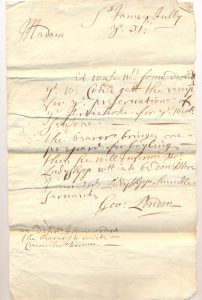
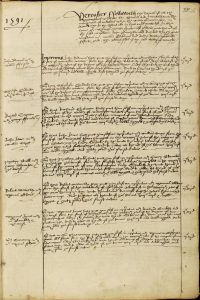
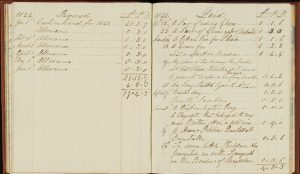
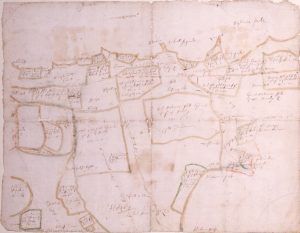
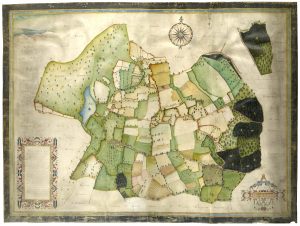
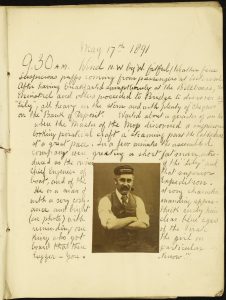
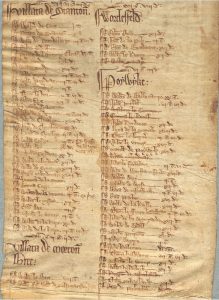
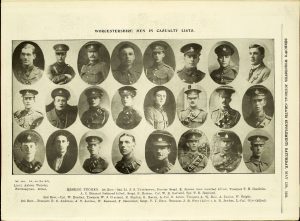
Post a Comment